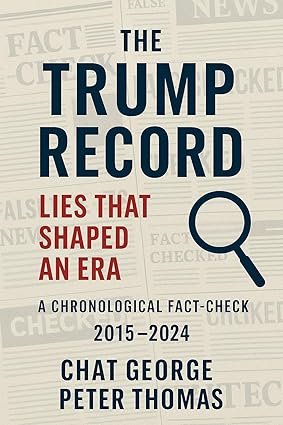The document is a comprehensive chronological archive of falsehoods made by Donald J. Trump from the launch of his presidential campaign in 2015 through 2025. Its stated purpose is not partisan commentary but a factual record, drawing on verified sources such as The Washington Post Fact Checker, PolitiFact, FactCheck.org, Reuters, and CNN Fact Check. Each entry documents the original claim, the verified facts, and an analysis of its political and social impact. To underscore its theme, the book also uses a “Pinocchio” rating system and minimalist illustrations to represent the scale of dishonesty.
The foreword frames the project as a defense of truth in an era of disinformation. It emphasizes that lies—especially repeated ones—reshape public perception, policy, and democratic norms. The book is described as a “living document” updated every three months.
2015–2016 (Chapters 1–2): Trump’s falsehoods as a candidate set the tone for his political rise. Themes included immigration, crime, unemployment, and rewriting personal history. Notable claims ranged from accusing Mexican immigrants of being criminals and rapists to falsely saying he opposed the Iraq War from the beginning. By 2016, his lies escalated strategically, targeting opponents, inflating crime, and sowing distrust in elections. PolitiFact even named his entire campaign the “Lie of the Year” in 2015.
2017–2018 (Chapters 3–4): During his first two years as president, falsehoods multiplied dramatically. The Washington Post recorded over 2,000 misleading claims in 2017 alone. Trump exaggerated accomplishments, attacked the press, distorted crime and immigration statistics, and undermined institutions. Major controversies included crowd size at his inauguration, baseless claims of voter fraud, the “very fine people on both sides” remark about Charlottesville, and misleading statements on family separation policies. By 2018, he averaged 15 false statements per day.
2019–2020 (Chapters 5–6): Lies became central to Trump’s survival strategy. In 2019, amid impeachment, he denied pressuring Ukraine despite transcripts proving otherwise, and repeated slogans like “perfect call” and “witch hunt.” By 2020, the pandemic brought a new wave of disinformation: downplaying COVID-19, pushing false cures, dismissing masks, and inflating U.S. performance compared to other nations. He also spread election lies, culminating in the false claim that “we did win this election,” which fueled the January 6, 2021 insurrection.
2021–2022 (Chapters 7–8): Even after leaving office, Trump’s falsehoods persisted. He amplified the “Big Lie” about election fraud, defended January 6 rioters as patriots, and used Truth Social and rallies to maintain influence. He also promoted false claims about inflation, crime, and the FBI’s Mar-a-Lago search.
2023–2025 (Chapters 9–11): With multiple indictments, Trump’s lies shifted into campaign fuel. He dismissed charges as hoaxes, exaggerated foreign policy wins, and distorted economic records. In 2025, new themes emerged: misuse of AI content, conspiracy rhetoric about South Africa, fabrications about stopping wars, and even claims of a 1,500% reduction in drug prices. His falsehoods increasingly blurred satire, fantasy, and policy.
The conclusion stresses that Trump’s lies followed a trajectory of repetition, escalation, and normalization, evolving from self-promotion to destabilizing democratic institutions. By mid-2025, over 30,500 false or misleading claims had been documented. The book presents this archive as both a historical record and a warning about the dangers of misinformation to democratic governance.
